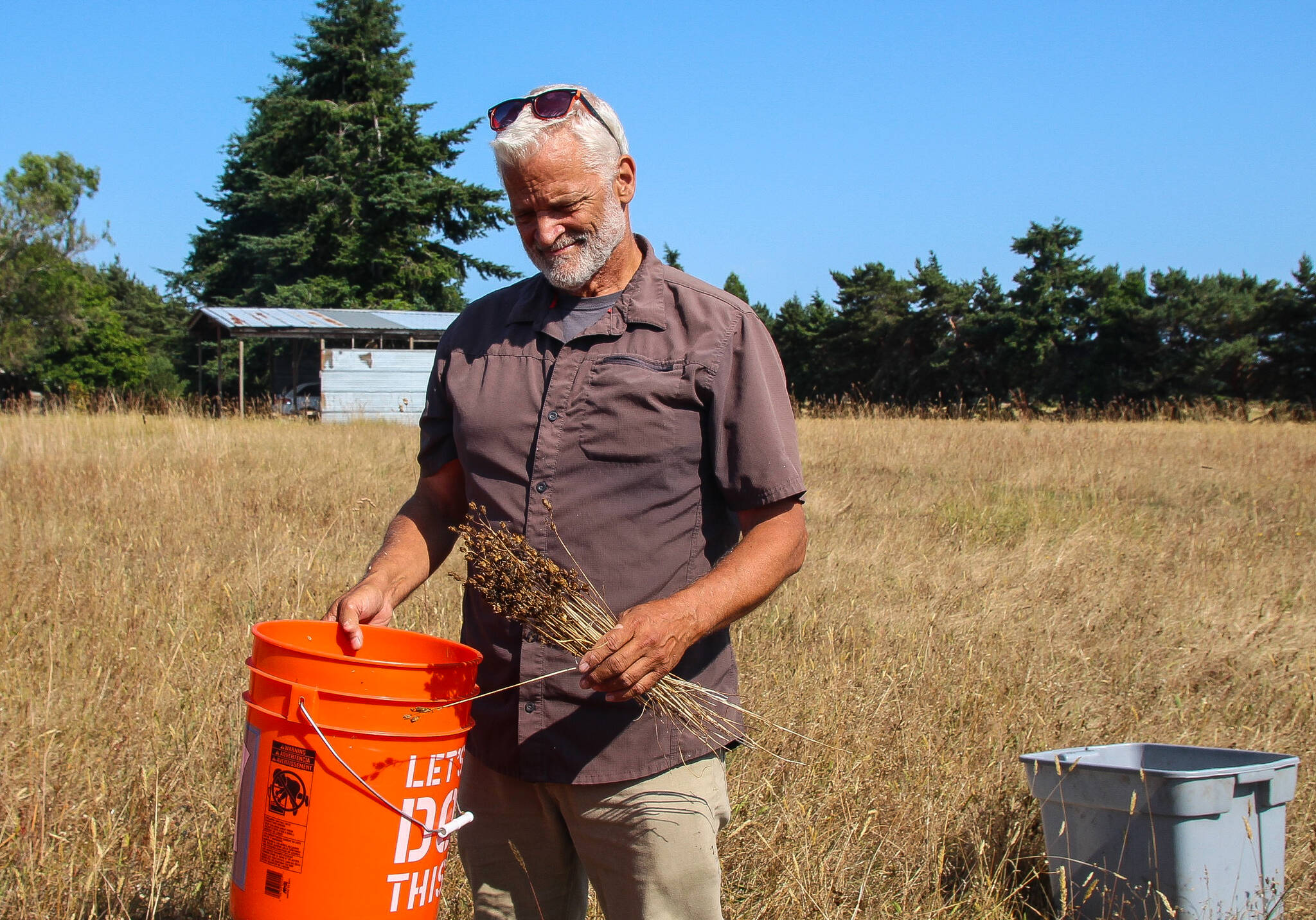On a Friday afternoon in early July, Dr. Robert Pelant and a small crew of volunteers scanned a three-acre field of what an outsider might have viewed as boring, useless weeds.
Practicing what Pelant jokingly calls “Mesopotamic method” — as the labor is entirely manual — volunteers crouched out of sight in a sea of rustling brown plants, patiently pulling the seeds out of each camas and spring gold to fill their buckets. Sometimes, to expedite the process, Pelant would identify a cluster of desired species, kicking and slapping the seeds out into his recipient.
This unusual workout is part of a project launched in 2009 by the Pacific Rim Institute, a Coupeville-based nonprofit dedicated to the protection of biodiversity and educating the public about sustainable practices.
Every week between July 1 and Aug. 19, Pelant welcomes volunteers with zero to plenty of experience to collect native seeds, stems and bulbs to restore habitats in Washington. Many volunteers come from the Navy or different Washington tribes.
These areas include tribal lands, Protection Island, Naval Air Station Whidbey Island, Nature Conservancy land on Whidbey, National Park Service land on Whidbey and San Juan, Fort Casey State Park and more.
“What you’re doing today is a real big help for us,” Pelant told the volunteers. “This is really where it starts, collecting the genetic material to make things happen and get biodiversity back into our environment.”
Although there are restoration areas on the island, the progressive fragmentation of the landscape caused them to be too far apart for pollinators to fly back and forth and help them reproduce. And that’s where the institute’s volunteers come into play.
One of the goals is to mitigate the effects of Eurocentric land practices that came in the 1850s with the arrival of the first non-Indigenous settlers. By stopping cultural burns — an Indigenous practice that served to keep the ecosystem healthy and productive — and introducing invasive species, the landscape changed dramatically.
“Because the native plants that evolved that way for 10,000 years weren’t able to adapt to the absolutely sudden cessation of fire, weeds were able to take over,” Pelant said.
These weeds, seen as desirable by farmers, represent a serious threat to native plants.
“It’s really kind of funny, isn’t it?” Pelant said. “What people are growing down the way we might spend hours, effort, labor and equipment to try to remove from our field.”
According to the U.S. Forest Service, invasive species are partly responsible for the decline of 42% of endangered and threatened species in the country. By producing large quantities of seeds, taking up resources and growing dense root systems, they outcompete native species.
With the loss of biodiversity, pollen and nectar become available only during limited periods of time. Ironically, dandelions — an invasive species — are among the few plants that support pollinators in the winter.
“We’re not saying, ‘Let’s get rid of all the dandelions,’ but we’re saying, ‘Let’s add more native species to mix,’ so that we can support more species of insects and arthropods, reptiles and amphibians,” Pelant said.
After two hours in the field, Pelant hopped on board a green golf cart and drove back to the institute’s native plant center, a small building where the seeds, stems and bulbs are sifted, dried and stored until an organization needs them. Some unfortunate insects and spiders may end up in the mix, blending in almost perfectly with the seeds.
Not all of the material collected is used for restoration purposes. Though Pelant said abundance is great, keeping part of the harvest stimulates more young plants to germinate and grow, which Indigenous people have done since time immemorial. In fact, according to Pelant, plants like chocolate lilies are a food staple in Indigenous culture.
Pelant believes that anyone can do their part in habitat restoration. For example, farmers can save a small portion of their land for native species, which would increase their crop yield. Native plants can also be integrated in our homes, with a small pollinator section in the garden.
“There’s something we can all do,” he said.



